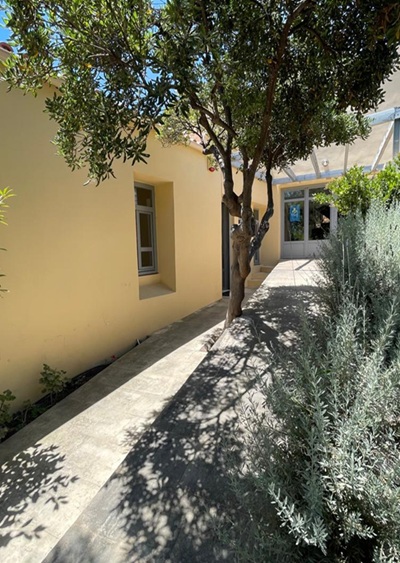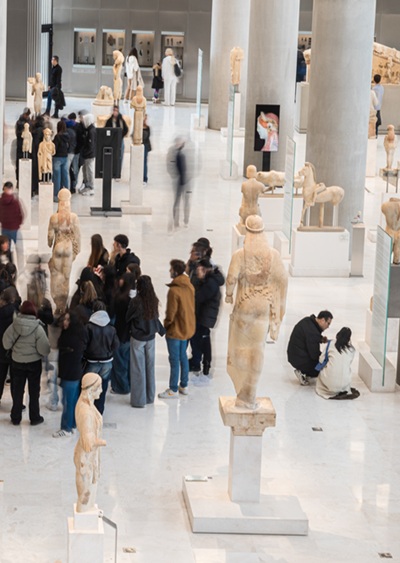
A glorious palace, seems to have been the Minoan palace of Archanes, as revealed by this year’s excavation of the Archaeological Society under the direction of Dr. Efi Sapouna-Sakellaraki. The excavation, which took place in the northernmost, so far, part of the palace, added many new details about the building and complemented the scientists’ knowledge of its architecture and construction. In particular, the ground floor and the first floor were excavated, while numerous stones had fallen from the second or third floor, including parts of the floors.
The most interesting element of this year’s excavations was the revelation of the use of a shiny material, gypsum stone, known from Phaistos and Knossos. In Archanes it was used excessively in pilasters, polyhedrons etc. leading to the image of a ‘shiny’ building. The discovery of the palace’s multi-window was also important, which together with the two-window – which was also discovered – made of gypsum stone and a central column form part of a ‘Minoan Hall’, an important element of the luxurious (elite) Minoan architecture.
For the story of its discovery, it should be mentioned that Sir Arthur Evans, apparently having pointed out some evidence, believed, according to the Victorian beliefs of the time, that the “summer palace” of Knossos would be located there. The palace was subsequently sought by Marinatos and Platon but in the wrong places.
The area was inhabited continuously, after the Minoan era, in the Mycenaean years, in historical times, until today. It was not by chance that the Minoans chose this site for the construction of a palace. It has rich waters from the Juchtas River, where the Sanctuary of the Summit is located, as well as springs. Thus it had the management of the waters, even of Knossos, through the river Kairatos, something that was later exploited by Morozinis (17th century) to bring water to Heraklion. Besides, the name Arch(anes) has an Indo-European origin, as the root “Arch or Ach” means water (Inachos river, Acherousia and aqua in Latin).
In order to fully understand these important elements, the Ministry of Culture and Education collaborated with ITE, the National Technical University of Athens and experts. Among them, Mrs. Eleftheria Tsakanika, former professor of the NTUA, saw the shining gypsum stone of the palace, assuring that in Archanes it was used more than in Knossos.
This year’s excavation involved the archaeologists Dr. Polina Sapouna Ellis, Dimitris Kokkinakos and Persephone Xylouri, the designers Yannis Androulidakis and Agapi Ladianou and the conservators Veta Kalyvianakis and Chrysanthi Zacharioudakis.







Leave A Comment